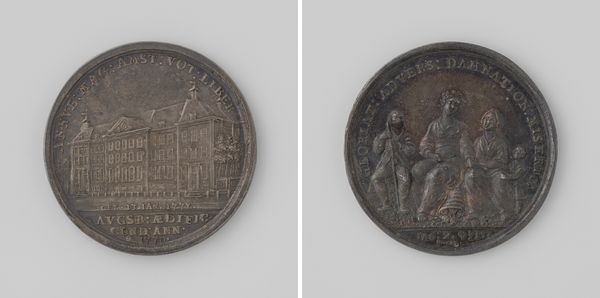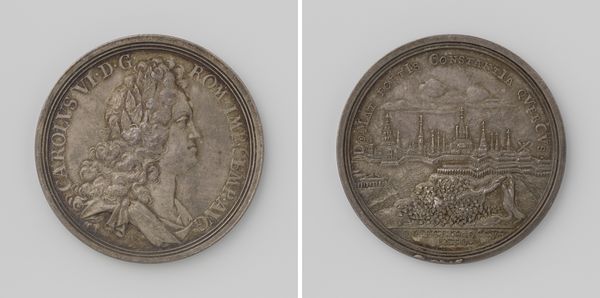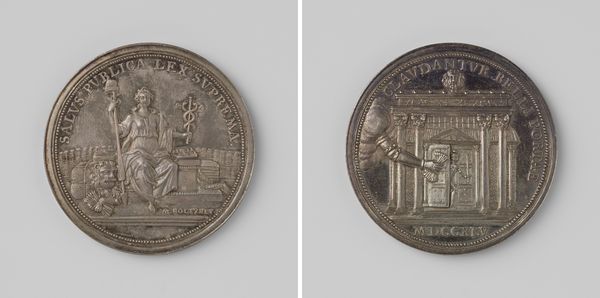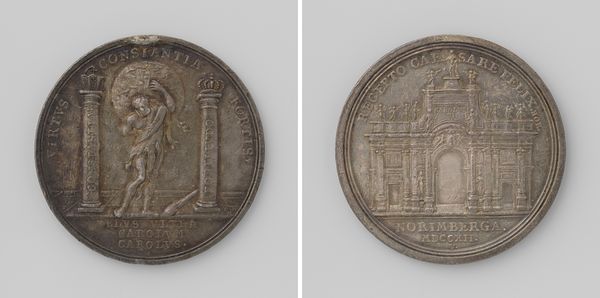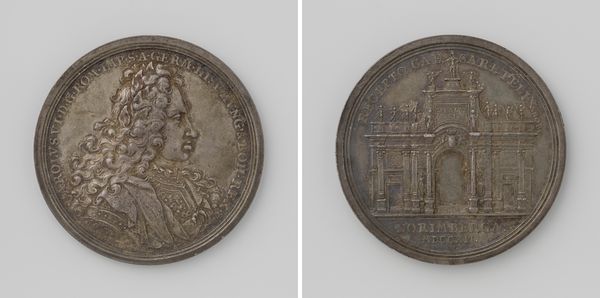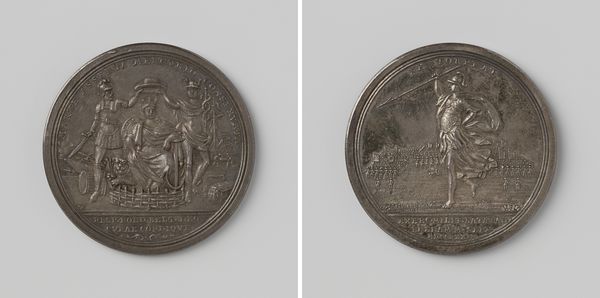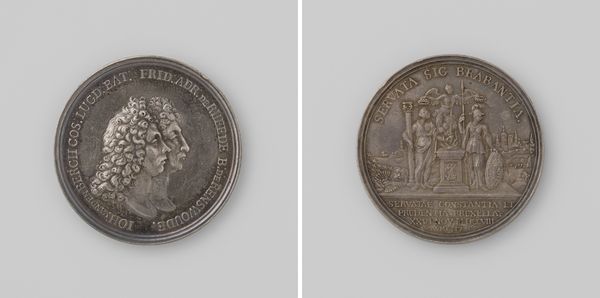
Mislukte aanslag op het leven van Stanislaus II Augustus Poniatowski, koning van Polen 1771
0:00
0:00
metal, relief, sculpture
#
portrait
#
neoclacissism
#
metal
#
stone
#
sculpture
#
relief
#
sculptural image
#
sculpture
#
history-painting
Dimensions: diameter 4.3 cm, weight 21.89 gr
Copyright: Rijks Museum: Open Domain
Editor: Here we have a metal relief sculpture called "Mislukte aanslag op het leven van Stanislaus II Augustus Poniatowski, koning van Polen" or "Failed Attempt on the Life of King Stanislaus II Augustus Poniatowski, King of Poland." It’s from 1771 and created by Johann Leonhard Öxlein. It strikes me as very formal and stiff, typical of its Neoclassical style. What kind of a story is being told here? Curator: Well, on one level, it's about Polish royal history and specifically about an attempted assassination. But it is really more about political imagery and the power of Neoclassicism to communicate a very specific set of values. Note how the events depicted are framed, both literally and figuratively. The circular frame constrains and defines the narrative. Neoclassicism in the late 18th century was increasingly employed to legitimize power and order. Editor: So you are saying the artist is almost crafting a particular narrative around the event itself? Curator: Exactly. The artist isn't simply documenting; they're actively participating in the construction of how this event is remembered and understood. It makes me wonder, who was the intended audience and how did they receive this particular message? What values and ideology is reinforced in the public's mind through pieces like these? Editor: I hadn’t considered the reception side. How crucial do you think this artwork was in manipulating public sentiments regarding the king at that time? Curator: Its direct impact is difficult to measure definitively centuries later. What we *can* ascertain is its role as a deliberate piece of political marketing; a key artifact in understanding power dynamics during that period. Its public role is undeniable. Editor: That's fascinating. It's made me look at this piece with fresh eyes, considering the social and political landscape. Thank you. Curator: Likewise. Considering such works from both an aesthetic and political perspective can enrich our understanding and our interpretations of them.
Comments
No comments
Be the first to comment and join the conversation on the ultimate creative platform.
